Caring for violets at home
Caring for indoor violets begins with preparing the correct substrate and container for the plant. For planting, an acidic composition is taken, including peat, dried sphagnum moss, leaf soil, sand and charcoal. Moreover, moss and coal should not make up more than 10% of the total composition of the main ingredients:
- – 3 volumes;
- leaf soil - 5 volumes;
- coarse river sand – 1 part.
Experts advise adding perlite and vermiculite to peat, which help retain moisture in light soil. A poor composition requires the addition of nutrition during growth. Once a year, a humate solution is added in winter; in spring and autumn, mineral fertilizing is done with a special liquid fertilizer for Saintpaulias. The condition is to prevent overfeeding; the soil should always remain thin.
Containers and timing of transplantation
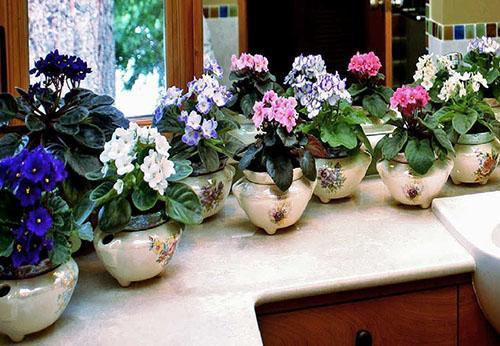 Growing violets at home has no details. In order for the lump of earth not to turn sour, it must be sufficient for the development of roots, but without excess. So, for an adult plant, a glass with a height and diameter of 10 cm is quite enough, and half of its lower part should consist of drainage filling.
Growing violets at home has no details. In order for the lump of earth not to turn sour, it must be sufficient for the development of roots, but without excess. So, for an adult plant, a glass with a height and diameter of 10 cm is quite enough, and half of its lower part should consist of drainage filling.
Until the root system fills the pot with soil, the plant will not bloom. For dilution, the first container can be 6 cm in diameter. The drainage hole must be large enough everywhere. The plant is replanted once every three years, and it is not necessary to change the container of the pot; you can only change the soil, carefully cleaning the roots as much as possible.
Propagation and transplantation of violets
 Planting and caring for violets at home begins with obtaining a young plant. Reproduction can be carried out:
Planting and caring for violets at home begins with obtaining a young plant. Reproduction can be carried out:
- leaves;
- cuttings;
- seeds;
- rooting of flower stalks.
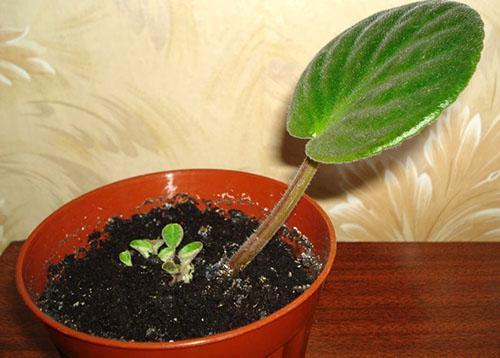 The simplest and most frequently used method is rooting the leaf. Before rooting, the cut of the resulting leaf should be renewed, making it diagonally across the leaf with a disinfected tool and lowering the cut into water until callus and roots form.
The simplest and most frequently used method is rooting the leaf. Before rooting, the cut of the resulting leaf should be renewed, making it diagonally across the leaf with a disinfected tool and lowering the cut into water until callus and roots form.
With a root length of 4-7 cm, the leaf can be rooted, covered on top from excessive evaporation and wait for the results to appear. The small plants that appear are seated in separate containers as they grow. With good care, such plants will bloom in a year.
Hybrid violets, called chimeras, can only be propagated by stepsons and peduncles that transmit maternal qualities. The stepson can be separated from the main outlet using an awl and rooted immediately in a peat tablet.
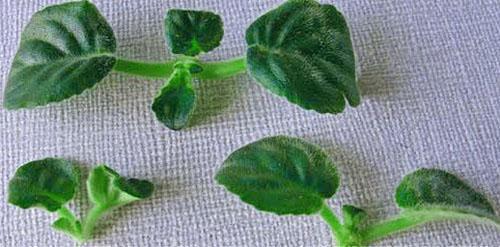 When replanting plants, you should ensure the health of the root system. The roots of the plant are white, alive and completely fill the container. When removed from a conical pot, it retains its shape. This is the basis of one of the methods of watering a plant, for which an external cushion is created, soaked through a filter. To do this, a well-designed plant is placed in a larger pot with a moist substrate in a special nest.
When replanting plants, you should ensure the health of the root system. The roots of the plant are white, alive and completely fill the container. When removed from a conical pot, it retains its shape. This is the basis of one of the methods of watering a plant, for which an external cushion is created, soaked through a filter. To do this, a well-designed plant is placed in a larger pot with a moist substrate in a special nest.
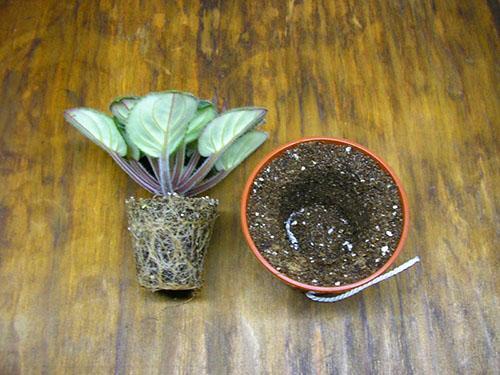 An audit of the root system involves removing all brown dead roots. Only light, living, healthy roots are left. With this treatment, the plant can be washed in water, and the roots can be straightened and planted in a prepared pot. If the rot has eaten the root, strip the plant down to living tissue, sprinkle it with activated carbon and dry it, and then re-root it in water or in moss, which has bactericidal properties.
An audit of the root system involves removing all brown dead roots. Only light, living, healthy roots are left. With this treatment, the plant can be washed in water, and the roots can be straightened and planted in a prepared pot. If the rot has eaten the root, strip the plant down to living tissue, sprinkle it with activated carbon and dry it, and then re-root it in water or in moss, which has bactericidal properties.
Plants feel good in summer at temperatures up to 25, in winter at 18-20. Air dryness should be about 50%. The plant requires a year-round day length of at least 10 hours, and during flowering periods, local illumination with fluorescent lamps.
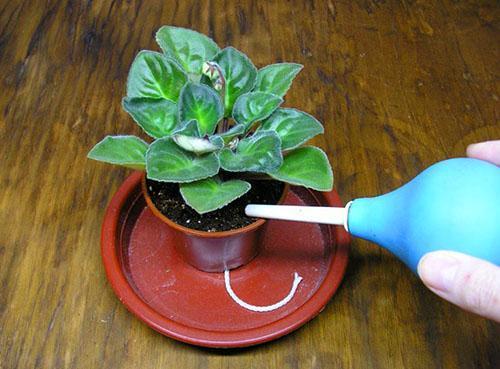 If watering is carried out through a pan, then excess water should be drained. When watering the pot, do not wet the leaves. In summer, water a little every day, in winter - 2 times a week. The young plant will bloom in a year, not earlier.
If watering is carried out through a pan, then excess water should be drained. When watering the pot, do not wet the leaves. In summer, water a little every day, in winter - 2 times a week. The young plant will bloom in a year, not earlier.
If proper care is taken, a photo of violets at home will be a reward.
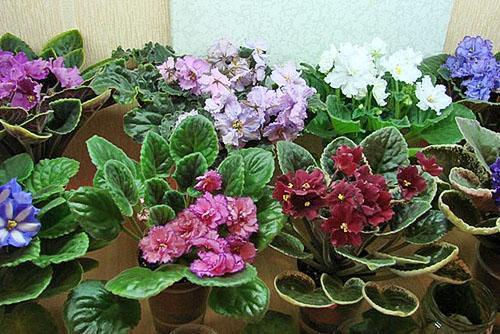 Plants usually bloom for about 2 months, while flowers that have faded and have lost their decorative effect need to be plucked out.
Plants usually bloom for about 2 months, while flowers that have faded and have lost their decorative effect need to be plucked out.








 Nail care
Nail care Prom hairstyle for long hair
Prom hairstyle for long hair 18 wonderful New Year cards that even a child can make
18 wonderful New Year cards that even a child can make The best set of exercises for morning exercises
The best set of exercises for morning exercises